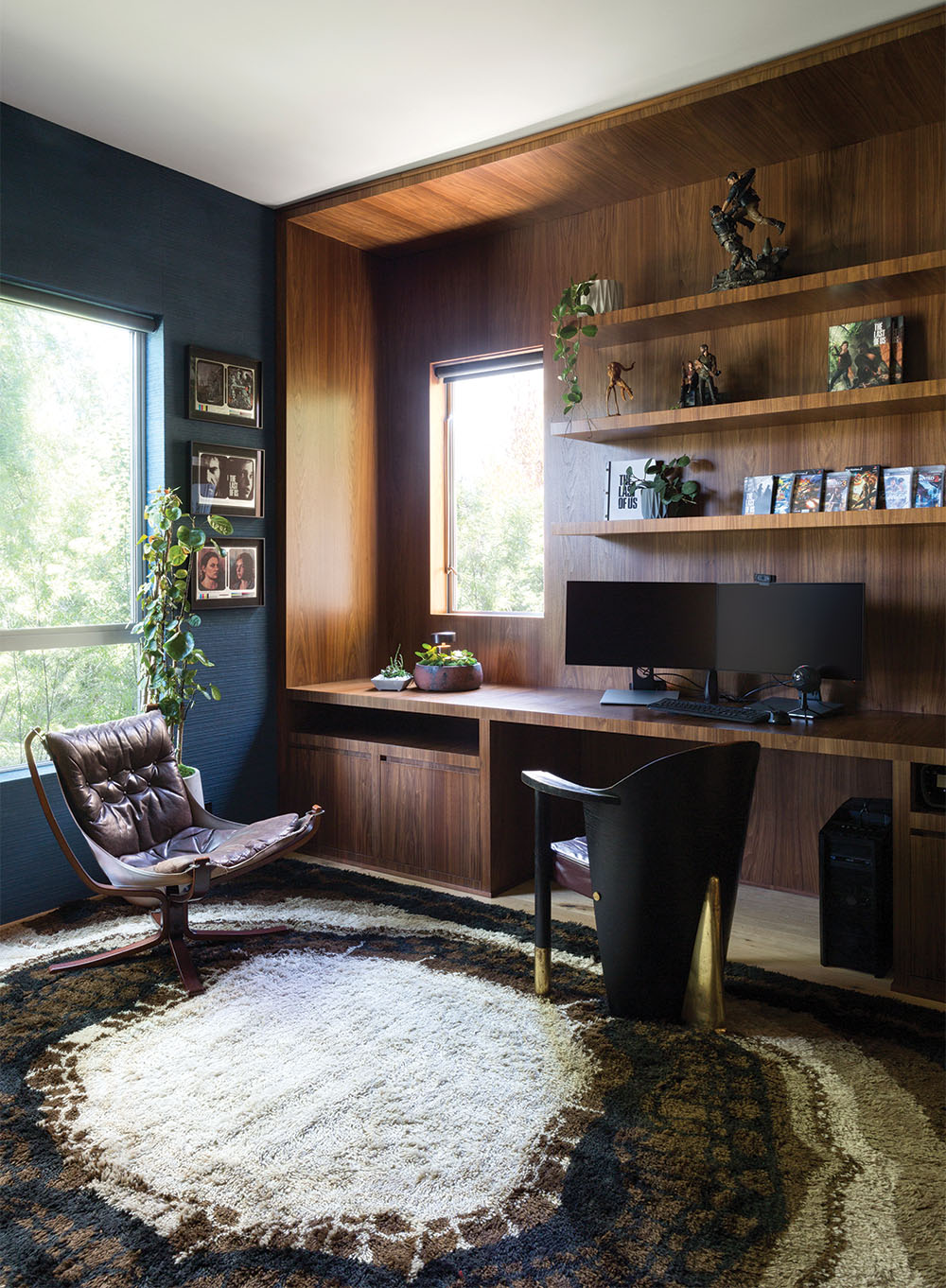
Neil Druckmann gestures toward his giant comic book collection. “That’s something Ellie would appreciate,” says the co-president of video game developer Naughty Dog, name-checking the female lead in The Last of Us. He’ll see the character come to life starting Jan. 15, when she’s portrayed by Bella Ramsey in the upcoming HBO series adaptation of the popular PlayStation 3 title Druckmann conceived and wrote.
The nine-episode show also stars Pedro Pascal as Joel, the smuggler who shepherds her across a postapocalyptic United States. “My hope is that it completely changes how non-gamers view what games are capable of when it comes to deep narratives,” says Israel-born Druckmann, the show’s co-writer and a director and executive producer.
He’s sitting in the TV room of his four-bedroom, five-bathroom Santa Monica residence, a contemporary two-story he purchased in 2019 that reflects his rich inner life and vivid imagination.
But this incarnation of the house is new. “I was operating out of a white room — this is peak pandemic, peak Zoom — and people kept commenting that it looked like I was in prison,” says Druckmann.

Enter interior designer Kim Gordon. “I was just like, ‘No, no, no. This won’t work,’ ” she says. Hired initially just to zhuzh up his office, Gordon ended up reimagining the entire house.
“When we first started, I think he thought of home as being just the place where he sleeps,” says Gordon. “That changed as rooms started to evolve and he started to consider what he wanted to be surrounded by.”
Druckmann’s desolate office, for example, became a warm, welcoming space. “I did the snap finger thing and the reverberation was hard and hollow” recalls Gordon of what the office was like previously. “How can you tap into your creativity if a place doesn’t nourish you?” The designer brought in softness via a vintage rug, textured navy walls, thick curtains and a curvaceous couch. She filled wooden bookcases with Druckmann’s favorite tomes and intriguing memorabilia. A display of his guitars alongside a distressed leather chair became an invitation — now, when work feels stressful, Druckmann noodles on them. “And then I can jump back into work, calmed,” he says.
He found the transformation enlightening. “It’s funny because I’m so steeped in game and environment design, but for some reason, I never made that crossover to interiors,” he says.

Now the home is a testament to his passions. “I love having these artifacts around,” he says. “They have a nostalgic value to them that brings me joy.”
The stairwell showcases a retro-looking Polycade video game console, while in the dining room, the zoomorphic chairs, a horse-skeleton print and a light fixture that resembles a grouping of cells all speak to his fascination with anatomy. The living room’s wall unit holds his record collection, and instead of a TV, there’s a large slab of stone over the fireplace. “I wanted one room that was analog, that didn’t have a TV,” says Druckmann. “When guests come over, this is where we sit and talk.”
In the kitchen, Gordon swapped out the somber gray cabinetry for walnut fronts and brought in an antique runner. Upstairs, Gordon turned a pair of awkward bookcases at the end of a hallway into a nook that’s become a pre-bedtime hangout space for Druckmann and his children. The video game developer has even come around to the couch Gordon suggested he install in the primary bath. “The kids are always coming in here to brush their teeth, and we’ll just hang out,” he says. “Now I can’t even imagine a bathroom without a couch.”

“Like in games, a lot of design is problem-solving,” he adds. “So I really liked that Kim focused on what was important to me. She came up with some very fantastic ideas and made the house truly livable.”
This story first appeared in the Nov. 30 issue of The Hollywood Reporter magazine. Click here to subscribe.
